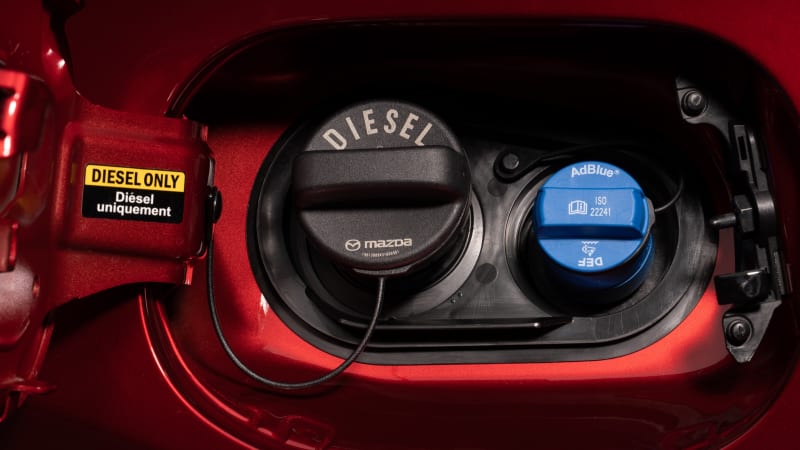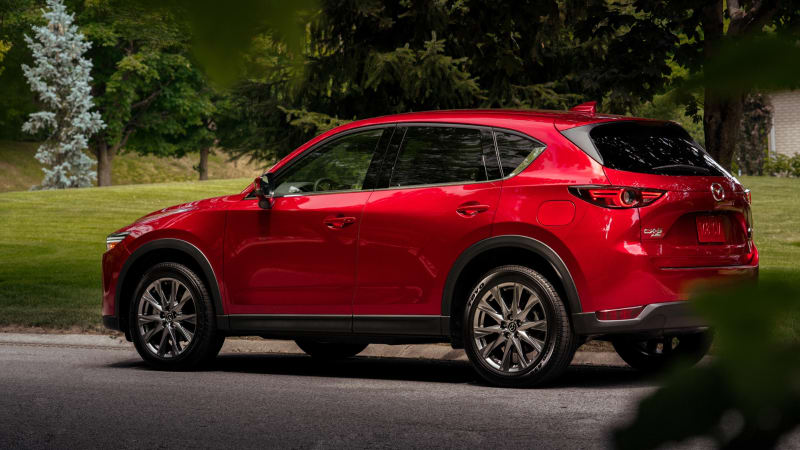2019 Mazda CX-5 Signature Diesel First Drive Review | A tardy inessential
https://ift.tt/2PvWGOn
We were suspicious of the much-delayed Mazda CX-5 Diesel when it finally arrived at our office late this summer. Had it surfaced four or even two years ago, we might’ve been more bullish, but at least we weren’t cynical — yet. Even the Volkswagen Dieselgate crisis couldn’t turn our hearts against the CX-5 Diesel. We already like the CX-5, after all, we also like the eager torque, quiet ride and excellent fuel economy the Skyactiv-D engine would surely provide.
But then we got the EPA ratings for the the CX-5’s diesel engine: 27 mpg city and 30 highway. Granted, that’s in an all-wheel-drive vehicle, but it’s a serious disappointment. The turbocharged, gasoline-powered 2.5-liter I4 in the CX-5 Signature gets 24 combined mpg, while offering up to 250 horsepower and 310 pound-feet of torque. The diesel version is down 82 hp (at 168) and 20 lb-ft (at 290), while elevating fuel economy to 27 city, 30 highway and 28 combined. The non-turbo gas motor in lesser AWD trims narrows the gap to just 2 combined mpg in favor of the diesel.
So what’s the selling point for the Skyactiv-D? Mazda says it’s a premium experience, and that’s why it’s only available in the top trim level. It’s easy to flinch at that, but it makes some sense, when you look at other diesels in the U.S. market The Signature trim of the CX-5, as with the Mazda6 we’ve come to adore, is good enough to target the lower end of, say, Audi customers who are looking to get a bit more content for the buck. These might also be the same people who’ve come out of a TDI vehicle and are already sold on the diesel experience.

From the first squeeze of our right foot, the diesel CX-5 makes a good impression. In town, we diced our way through Woodward Avenue traffic, made easy mostly by the CX-5’s relative small size and agility. There is one point in the throttle tip-in when the engine sounds particularly growly, and somehow more massive than its 2.2 liters of displacement.
The illusion began to crumble when we reached our first highway entrance ramp. Putting our foot to the floor, we got the quick first hit of growly torque, followed by … well not much. This engine begins to run out of steam as it climbs the rev ladder. That’s not totally unexpected, but it was definitely disappointing.
Furthermore, as Assistant Editor Zac Palmer points out, “By opting for the diesel, you add 115 pounds to the curb weight (now 3,940 pounds) of a comparable 2.5-liter turbo (3,825 pounds). Weight hurts the fun-to-drive quotient, and the lack of power makes the extra poundage even more noticeable.” Thankfully, the extra poundage doesn’t affect handling noticeably, and the CX-5 remains a relatively nimble-ish offering in a segment whose driving dynamics are largely ho-hum, regardless of what’s under the hood.
Autoblog Associate Editor Joel Stocksdale has his own take on the engine feel. He said, “The diesel might lack the ultimate passing power of the turbo gas engine, but the torque is great around town and arrives quickly thanks to a quick-spooling turbo. And compared with other diesel engines, the power doesn’t fall off as severely at higher rpm.“


In terms of content, the differences between the gas and diesel CX-5 Signature models are negligible, and amount to badging, one fewer exhaust tip and three fewer exterior color options for the diesel. The price gap is wider than you might think, though. While the gas CX-5 signature starts at $37,935 with destination, the Skyactiv-D version costs more than 10% more, at $42,045. Let’s say you live where gas and diesel are close in price, say $3.00 (hello, West Coasters). Driving 15,000 miles a year, it would take you 15 years to make up the price difference in fuel economy.
We’re not convinced that U.S. customers will buy the premium proposition Mazda is putting forward with the diesel. Sure, the CX-5’s interior is plenty accommodating and attractive in the Signature trim level, but that has nothing to do with the powertrain. Thinking about it, to really round out a premium package, we’d prefer our powertrain to be more than just adequate. “Then there’s the price,” Palmer notes “Paying slightly more for a Mazda wouldn’t typically bug me, but this gap between the diesel and 2.5-liter turbo is the main issue at hand. You’re paying significantly more cash for an inferior experience, and that just doesn’t feel particularly Mazda-like to me.”

There is one undeniable advantage to the diesel CX-5 over its gas-powered siblings: Towing capacity. If you need to tow, the gas CX-5 can do it — up to 2,000 pounds. With the Skyactiv-D, though, can tow 3,500 pounds. That’s a make-or-break it difference when it comes to pulling something like, say an Airstream Basecamp trailer (2,585 pounds, or 3,500-pound GVWR capacity). That said, a number of other small crossovers — Escape 2.0T and Equinox 2.0T for instance — match that towing capacity.
Beyond that, “I can’t think of any particularly good reason to get it over the turbo gas engine,” said Stocksdale. “The gas engine is much smoother and quieter, and it’s more powerful.”
Palmer added, “The only way this crossover makes sense is if you’re the kind of person who absolutely must have a diesel. Otherwise, this is an easy model to strike from your shopping list before you head to the dealer.”
We appreciate the fact that Mazda was willing to give diesel a chance here in the U.S. It just seems to offer too little, and far too late. In a vacuum, a CX-5 Skyactiv-D could be a promising proposition. But when it comes to quality, efficiency and fun in a small crossover that embodies the spirit of the brand, the existing powertrains already had that covered. And that’s not to say it’s bad, even if it’s a poor bargain. As Joel mentioned earlier, we’d love to try it out in a smaller Mazda offering. But with Mazda whiffing its chance to introduce this diesel engine on better footing in the U.S., we’d be surprised to see that happen.
Auto Blog
via Autoblog https://ift.tt/1afPJWx
October 29, 2019 at 01:16PM